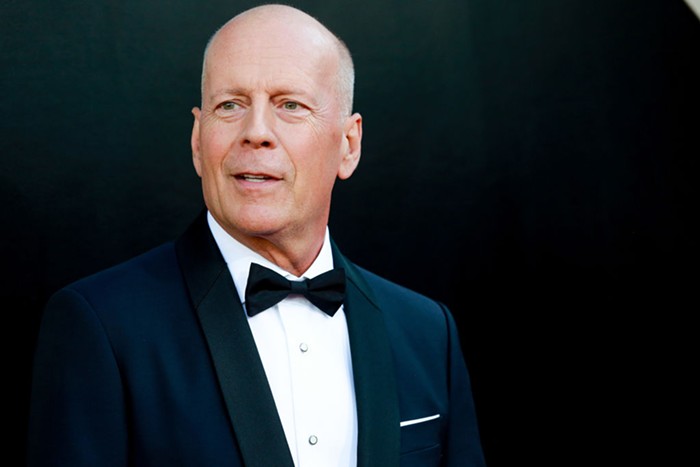"HI. MY NAME is Paige Powell. I sell ads for Interview. Call me: 971-279-7110." So reads text haphazardly stickered inside a white box lined floor-to-ceiling with photographs. Eighties music provides a backbeat to a collection of color and black-and-white images of that era's stars of the New York art scene, with only a sheet of plastic keeping you from scuffing Jean-Michel Basquiat's face with an untoward sneaker.
Paige Powell's The Ride, up now at the Portland Art Museum, is a show that gleefully breaks those rules religiously observed by stuffier exhibitions. You really can stand on Basquiat, Keith Haring, et al., though it will probably make you feel weird and intrusive to do so. Meanwhile, there's a disco ball and a strip of neon in lieu of crown molding on the ceiling. Across the room, the same repeated image of Basquiat watching TV takes up an entire wall, the repetition suggestive of an overgrown contact sheet. Single-channel digital projections fill the photographed TV screens with Powell's video work, featuring the likes of Haring and Andy Warhol.
Taken as a whole, the setup's effect is something like a jewel-box writ huge, the collaged walls of a teenage bedroom designed by a grown woman taking a backward glance—which is, in a sense, exactly what it is. Originally from Oregon, Powell left the Northwest for New York in 1980, and began a career at Interview magazine, where she eventually became associate publisher, befriended Warhol, dated Basquiat, and toted a camera through the New York art world, first documenting it in stills, and then becoming an early adopter of video.
Back in Portland since 1997, Powell's huge collection of video and photography—boxed up and hidden away until now—serves as an insider archive of a critical moment in contemporary art history, and a fascinating nexus of high and low culture. It's a show in an art museum that juxtaposes high-minded installation with snapshots of friends, music by Madonna, and documentation of artists whose own work was influenced by everything from street art to advertising. Powell was there while it was all happening, and unlike many of her contemporaries, she's still here.
Adjacent to Powell's photographs, Kenny Scharf's companion installation, Cosmic Cavern, is also more than worth a visit. Like Powell's photo-covered room, the Cavern is a box. From the outside, it doesn't look like anything more than a mess: portable gallery walls surrounded by all manner of junk. But climb inside and it's a wall-to-wall carnival. A neon powder-puff land of pipe-cleaner sugarplums under a blacklight, Cavern has the day-glo aesthetic of a commanding, drunken six-year-old and is the portable version of a project originally installed in a basement in Brooklyn. Neither show seems particularly child-friendly, but the kids I saw hopping around Scharf's Cavern looked totally delighted—and embodied everything that a few minutes spent in the glitter-cave will make you feel, which means we've finally discovered that much-coveted oasis: the perfect antidote to the winter darks, brought in boxes all the way from New York.













